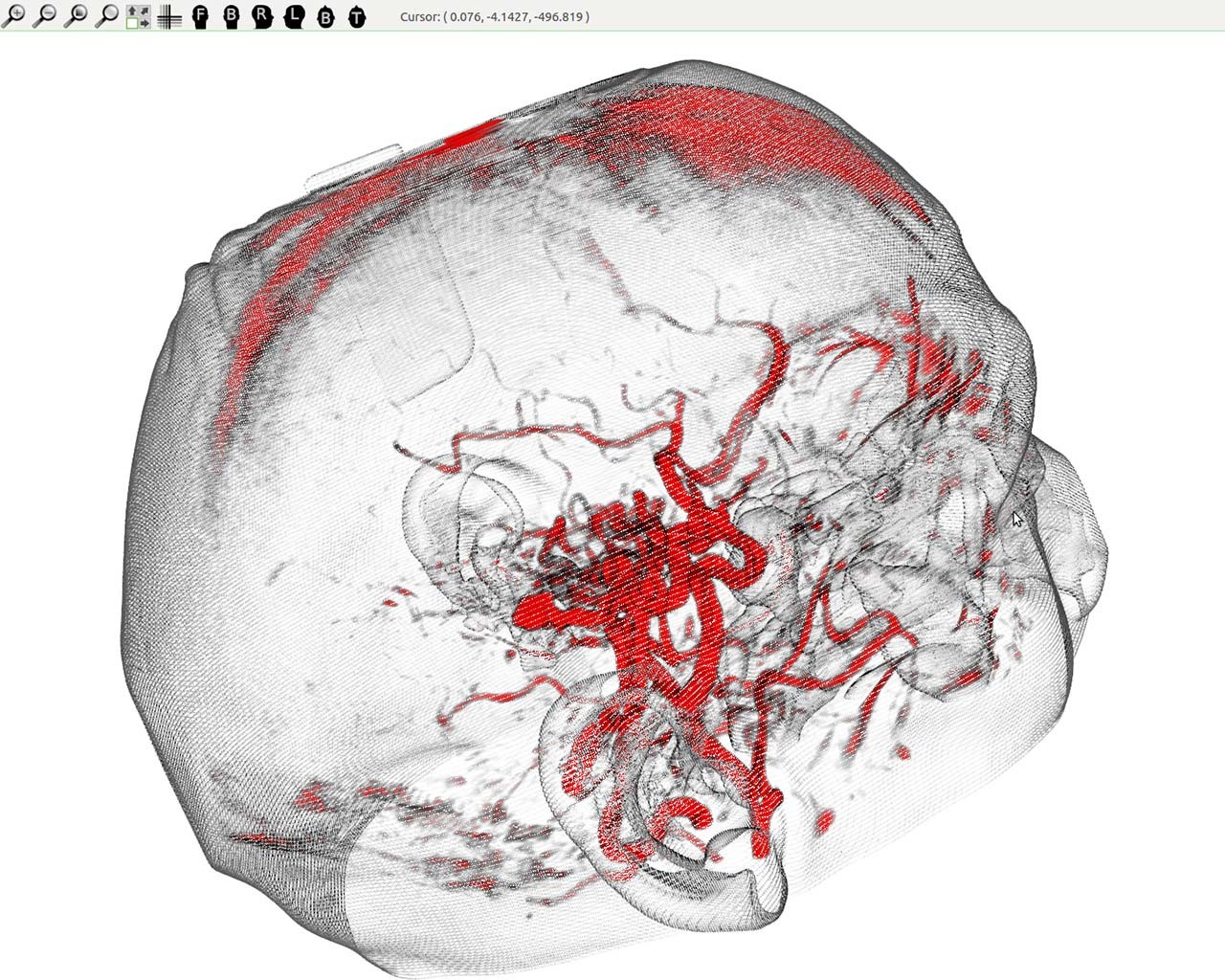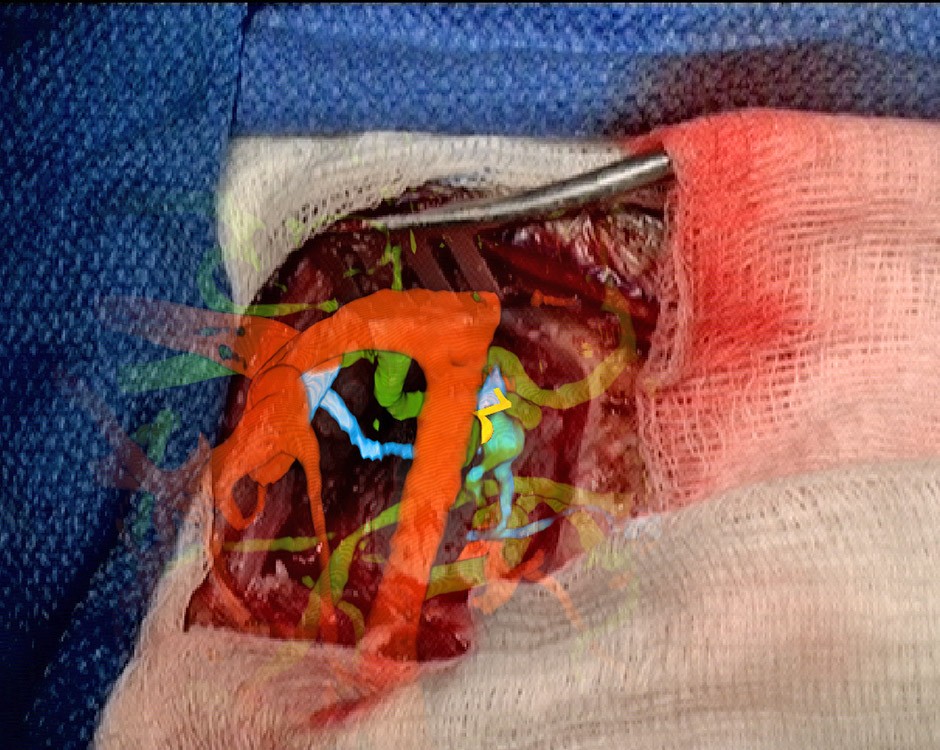“I am working on software tools to visualize and display anatomical patient images to help guide surgeons to treat neurological disease,” Kersten-Oertel explains. “I look at how to visualize and add depth to medical images. One of the applications of my work is in image-guided neurosurgery or neuronavigation.”
Currently, surgical visualization aids are displayed on monitors, forcing surgeons to cycle their focus between the surgery and the visual guide. To bypass this, Kersten-Oertel projects images directly onto the surgical area — effectively superimposing an accurate, three-dimensional anatomical map to act as a guide during invasive medical procedures.
“Think about how most of us get around by car,” she says. “We navigate with the help of GPS. The danger is that by having to look at a separate navigation system, you shift your focus away from the road. A few years back, BMW developed a solution by introducing augmented reality visualization. The navigation information is displayed directly on the car windshield, similar to a fighter pilot’s heads-up display.”
 Three-dimensional images projected onto a skull will provide a sense of depth, accurately mapping the internal anatomy. | Photo: Marta Kersten-Oertel
Three-dimensional images projected onto a skull will provide a sense of depth, accurately mapping the internal anatomy. | Photo: Marta Kersten-Oertel
 Images are superimposed onto the surgical area, providing detailed guides for surgeons. | Photo: Marta Kersten-Oertel
Images are superimposed onto the surgical area, providing detailed guides for surgeons. | Photo: Marta Kersten-Oertel